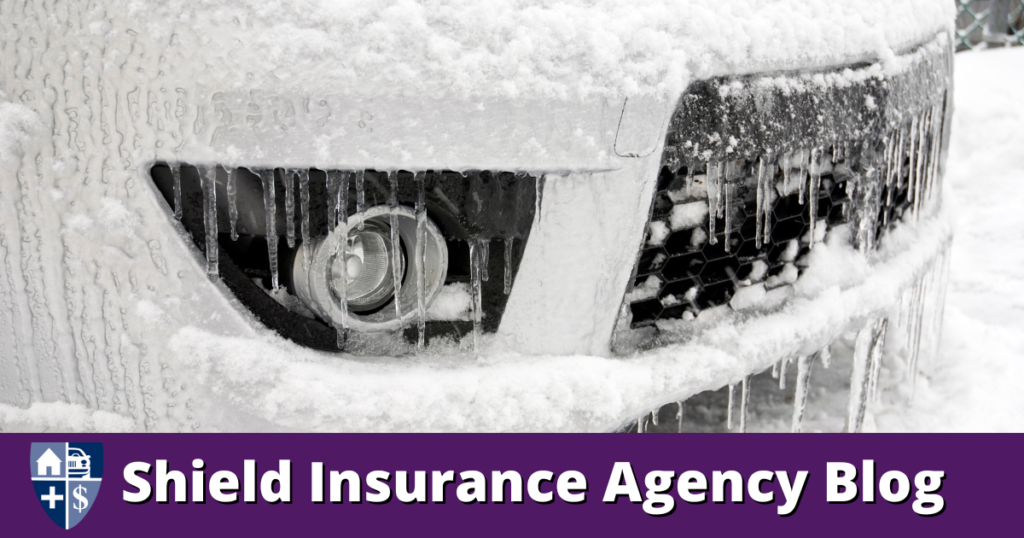Winterize Your Car. You know freezing conditions can be dangerous. Here’s how to be well-prepared if you need to take the car out when snow and ice coat the roads.
Popular Mechanics | BY MANASEE WAGH | NOV 4, 2022 | Winterize Your Car | Shield Auto Insurance
It’s November, which means now is the perfect time to get outside and start prepping your car for the ice and snow ahead. We put together a list of eight easy ways to winterize your car and stay safe. Our first three tips concentrate on your car’s tires, since rubber meeting ice presents the greatest potential hazard. The rest are simply good practices that will help you maintain your vehicle over time and prep for the worst-case-scenario.
Even if you follow all of our instructions to the letter, remember to make smart decisions depending on the current and forecasted weather outside. Make sure you know how to drive in different winter conditions. And finally, if you plan a road trip and wake up to find a blizzard approaching, consider postponing the drive unless you must travel for an emergency.
1. Switch to Winter Tires or New All-Season Tires
Winter tires don’t harden in the cold, so they have better traction on ice, slush, and snow. If you live in an area not normally hit by heavy snow, you may decide to stick with all-season tires—but you should still give those tires a check-up.
Get out a pair of thin rubber gloves and run a hand over each of your tires. “The tires are really going to make a difference in your ability to get around in inclement weather,” EricTheCarGuy explains on his YouTube channel. He recommends checking for abnormal wear, bumps, or spots that “catch your hand,” which are all signs that you should probably check your alignment, too. If a tire is worn out, change it. If you’re not sure if your tread is worn or not, you can use a handy tool called a tire tread depth gauge. Alternatively, you can stick a penny into the treads, with Lincoln’s head facing down into the tire. If you can see the top of his head, get those tires changed right away, according to the U.S. Department of Transportation.
Also remember that tires become harder on their surface from repeated heating and cooling over the seasons and years. Cars with apparently healthy treads can have poorer traction than you think they do. So when in doubt, swap those tires out.
2. Check Your Tire Pressure to Winterize Your Car
Make sure your tire pressure is correct, as stated in your owner’s manual, the tire placard located on the driver’s side door jamb, or in your car’s digital status center. For every 10 degrees Fahrenheit that the temperature drops, you could see a gain or loss of 1 pound per square inch of pressure. That’s because air molecules pack together more closely when the temperature drops. As the air becomes denser, the pressure it exerts on the interior tire walls drops. Make sure you’re refilling your tires whenever they’re a little low to maintain good traction and durability.
3. Put Chains On Your Tires in Extreme Cases
Chains should only be used while driving on snowy or icy roads. Never use chains on bare pavement, or they could cause damage to both your car and the road; Pull over and remove them if that’s the case. Check out this handy how-to video from the Oregon Department of Transportation about installing winter tire chains and how to correctly use them.
4. Install Winter Windshield Wipers to Winterize Your Car
Check out the rest of the great article!
Visit other blogs by Shield Insurance Agency!
- Navigating Michigan Auto Insurance: Understanding Collision Coverage
- Russ Cook Runs 385 Marathons In 352 Days, Becomes First Man To Run Entire Length Of Africa
- Life Insurance Demystified: Whole Life vs. Term Life – Which is Right for You?
- Restaurant’s Quest For Mystery ‘ French Fry Girl ‘ Ends In Heartwarming Discovery
- Shield Insurance’s Roadmap to RV Insurance in Michigan: What You Need to Know




















































